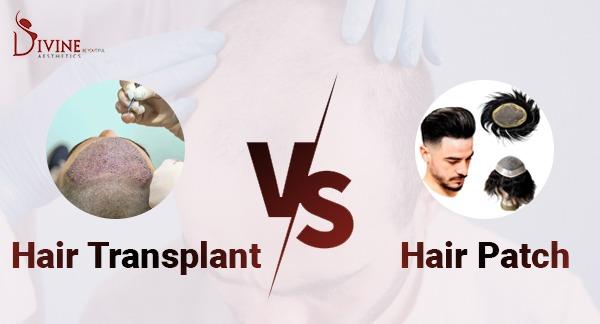Hair loss is a prevalent concern affecting millions of people worldwide, and its impact on one’s self-esteem and confidence can be significant. Fortunately, advancements in medical technology have led to various hair restoration solutions, with hair transplants and hair patches being two popular options. To shed light on this topic, we will explore both procedures in-depth, considering the expert opinion of Dr. Amit Gupta, a highly experienced plastic surgeon. By understanding the pros and cons of each method, individuals can make informed decisions about the most suitable solution for their specific hair loss condition.
Hair Transplant
A hair transplant is a surgical procedure that involves moving healthy hair follicles from one part of the body (usually the back or sides of the scalp) to the areas with thinning or no hair. The transplanted hair is permanent, making it an appealing choice for individuals seeking a long-term solution to hair loss.
Advantages of Hair Transplant:
Permanence:
The transplanted hair follicles are resistant to the hormone responsible for hair loss, ensuring the regrowth of hair in the recipient area.
Natural appearance:
A successful hair transplant results in hair that looks and feels natural, as the patient’s own hair is used for the procedure.
No maintenance:
Once the hair transplant heals, the transplanted hair does not require the maintenance, just like the rest of the natural hair.
Cost-effectiveness:
Though the initial investment may seem higher, a hair transplant eliminates the need for constant replacements or follow-ups, making it a cost-effective option in the long run.
Hair Patch
A hair patch, also known as a hairpiece or wig, is a non-surgical solution for hair loss. It involves attaching an artificial hairpiece to the scalp using adhesives or clips. Hair patches come in various materials, styles, and densities, catering to individual preferences.
Advantages of Hair Patch:
Non-invasiveness: Unlike a hair transplant, hair patches do not involve surgery or any incisions, making the procedure relatively simple and painless.
Instant results: Hair patches offer an immediate solution to hair loss, providing individuals with a full head of hair from the moment it is applied.
Reversibility: Hair patches can be removed at any time, allowing individuals to switch between different styles or go back to their natural hair if desired.
Cost-effectiveness: Hair patches might be more affordable upfront compared to a hair transplant, making them accessible to those with budgetary constraints.
Dr. Amit Gupta’s Expert Opinion
As an experienced plastic surgeon, Dr. Amit Gupta advocates for hair transplants as a superior and more permanent solution for hair loss. He emphasizes the following points:
Long-term benefits: Hair transplants offer long-lasting results, as the transplanted hair is naturally resistant to the balding process.
Natural appearance: Unlike hair patches, a successful hair transplant results in hair that looks and feels natural, blending seamlessly with the patient’s existing hair.
Reduced maintenance: Once the transplanted hair starts to grow, it requires minimal maintenance, similar to the rest of the natural hair.
Cost-effectiveness: Though the initial cost of a hair transplant may be higher, it eliminates the need for frequent replacements or follow-ups, making it more cost-effective in the long run.
Health and comfort: Hair patches can cause itching, sweating, and discomfort, leading to frequent follow-ups and adjustments, whereas a hair transplant involves minimal post-operative discomfort.
Conclusion
In conclusion, both hair transplant and hair patch have their respective advantages and disadvantages. A hair transplant offers a permanent, natural-looking solution with minimal maintenance and long-term cost-effectiveness. On the other hand, a hair patch provides instant results without the need for surgery but may require more frequent adjustments and replacements, leading to potential discomfort and additional costs.
Ultimately, the choice between the two solutions depends on an individual’s preferences, budget, and desired outcome. Seeking the advice of a qualified and experienced hair restoration specialist, like Dr. Amit Gupta, is crucial in making an informed decision tailored to one’s unique hair loss condition. Whatever option individuals choose, the ultimate goal is to regain confidence and feel comfortable in their own skin.
